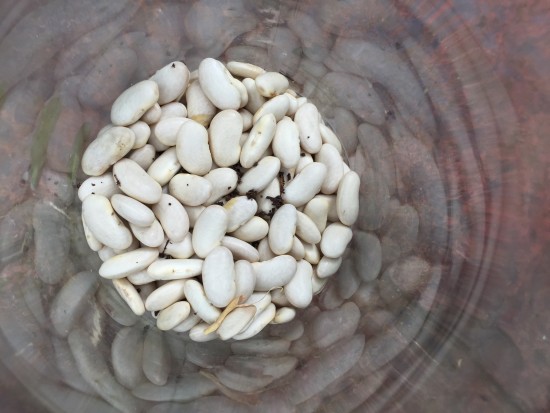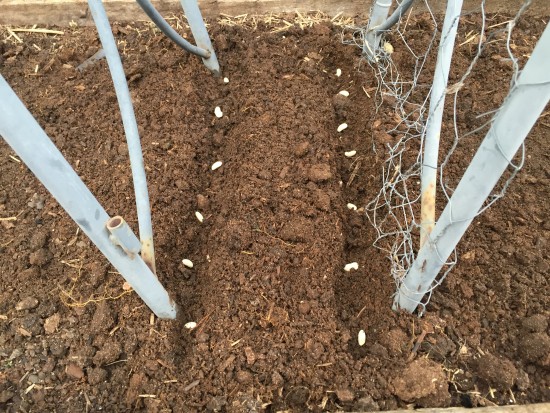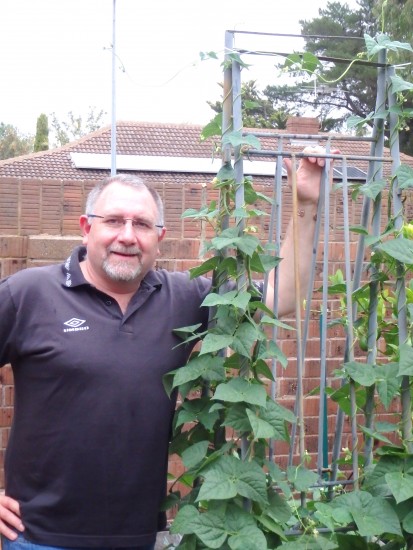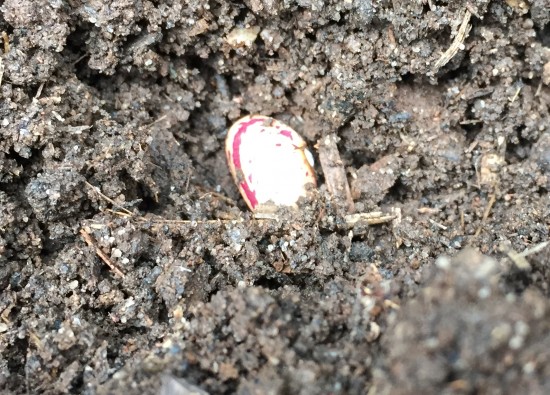Beans are one of the easiest vegetables to grow in the suburban backyard. Not only do they taste fresh and crisp, they are usually abundant croppers.
The more beans you pick, the more that grow. This veggie just keeps on giving and giving. Most beans are ready to start harvesting in about 8 to 10 weeks after sowing.
Now if you are worried about garden space, there are two main varieties of bean to plant during spring here in our temperate climate. If you are pressed for horizontal space, then you plant a climbing variety, and if you want to fill up a long narrow bed, then plant some dwarf bush beans.
Climbing Beans
For those horizontally challenged gardeners, you only need a little bit of space to grow climbing beans. You will need a frame on which to grow the bean stalks. I made this frame out of an old gazebo frame. Anything will work as long as it is round. Let your imagination go wild when it comes to beans.
My favourite climbing bean is the Lazy Housewife bean. They are a stringless bean, that just needs top and tailing before cooking and are very prolific. They are delicious eaten raw or cooked as a green bean, or dried for soups and stews.
Planting is easy.
Make sure your soil is rich with dug in compost and with your hand make a shallow furrow twice the depth of the bean. Climbing beans can be planted about 10 cm apart as they don’t compete for horizontal real estate. They just want to climb!
Cover the seeds with soil and pat gently, then water them in. You won’t need to water again until the first leaves emerge from the soil. Once you have a seedling, just keep the soil moist and watch them grow! They are an annual so have a single season lifespan.
Dwarf Bush Beans
Dwarf Bush beans are another easy bean to grow if you have a long narrow bed or tight space. I prefer varieties such as Borlotti and Snap Beans. Borlotti is usually dried for cooking, and Snap beans are better eaten as green beans as the seeds are quite small.
Bush beans are planted in a similar way to climbing beans except they are spaced further apart. Make sure the danger of frost has past as freezing will kill the seedlings. I plant these beans in well composted soil, about 20cm apart and about 30-40 cm between rows.
Plant double the depth of the seed (about 2.5 cm or 1 inch). Backfill the furrow and pat gently and water well. Don’t water for the first few days to prevent seed rot. The seedlings should emerge between 7-10 days and the bushes will grow about 50 cm (20 inches) height. You can start to harvest after 8-10 weeks and pick regularly for more beans. They are an annual so pull the plant and compost it after the beans stop developing.
The bushes rarely need support. Keep the soil moist and to prevent them from drying during Summer mulch the soil well with sugar cane mulch or pea straw once the first true leaves appear. If you have don’t have much room in your patch, dwarf bush beans love to grow in containers as long as you keep the potting mix moist.
Pests
Some seasons I have found that white fly is attracted to the climbing beans. To get rid of these little sap suckers, I spray with eco-oil mixed as directed, before the white fly takes over your bean patch. This pest will stunt the growth of your beans and reduce flowering if you let them take over. Aphids can also be an issue if the plants are weak. I use eco-oil because it is an organic spray that is allowed in organic systems.
However if you keep you bean stalks well watered, mulched, and give them a fortnightly application of Seasol or Worm Wee Tea, then the plants stay much healthier and are resistant to most pests. Plus healthy plants will reward you with a bumper harvest.
Get Planting!
So now you know how to plant beans, there’s really no excuse not to plant a few in your veggie patch this summer. They are just that easy to grow and reward you over and over again. In Melbourne it’s best to get your beans in the ground from mid September to late December.
Don’t forget to let a few pods dry out and save the seeds for next season! Store over winter in an airtight jar.









Yup I planted my beans last weekend. So hopefully I’ll get lots to eat and preserve for the winter. They re great for adding to slow cooker dishes. I just love them yummy
Well done Angela. As we don’t have a pressure canner, we will blanch and freeze our excess green beans. We love them in stir fry dishes as well.
Timely post Gavin, I put my Lazy Housewife beans in a couple of weeks ago, and have just planted out the bush beans. They’re my type of veggie, low maintenance and prolific producer 🙂 Oh, and they’re delicious too!
Did the Lazy Housewife bean appear yet? Should be peeking through by now.
I’d better get to it this weekend.
You’ve got a while yet Lynda, but the sooner you get your beans in, the sooner you will be munching on them! 😉